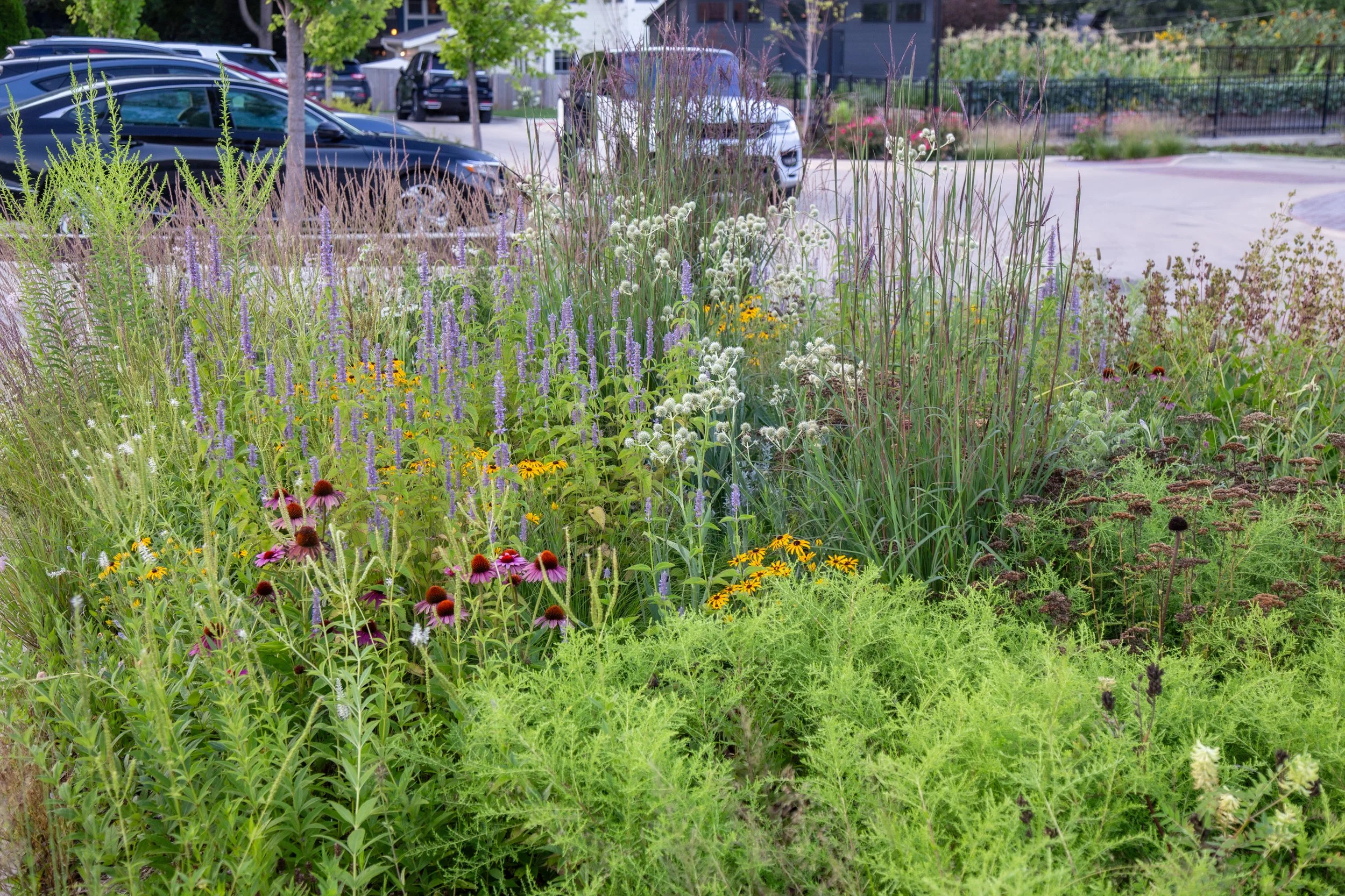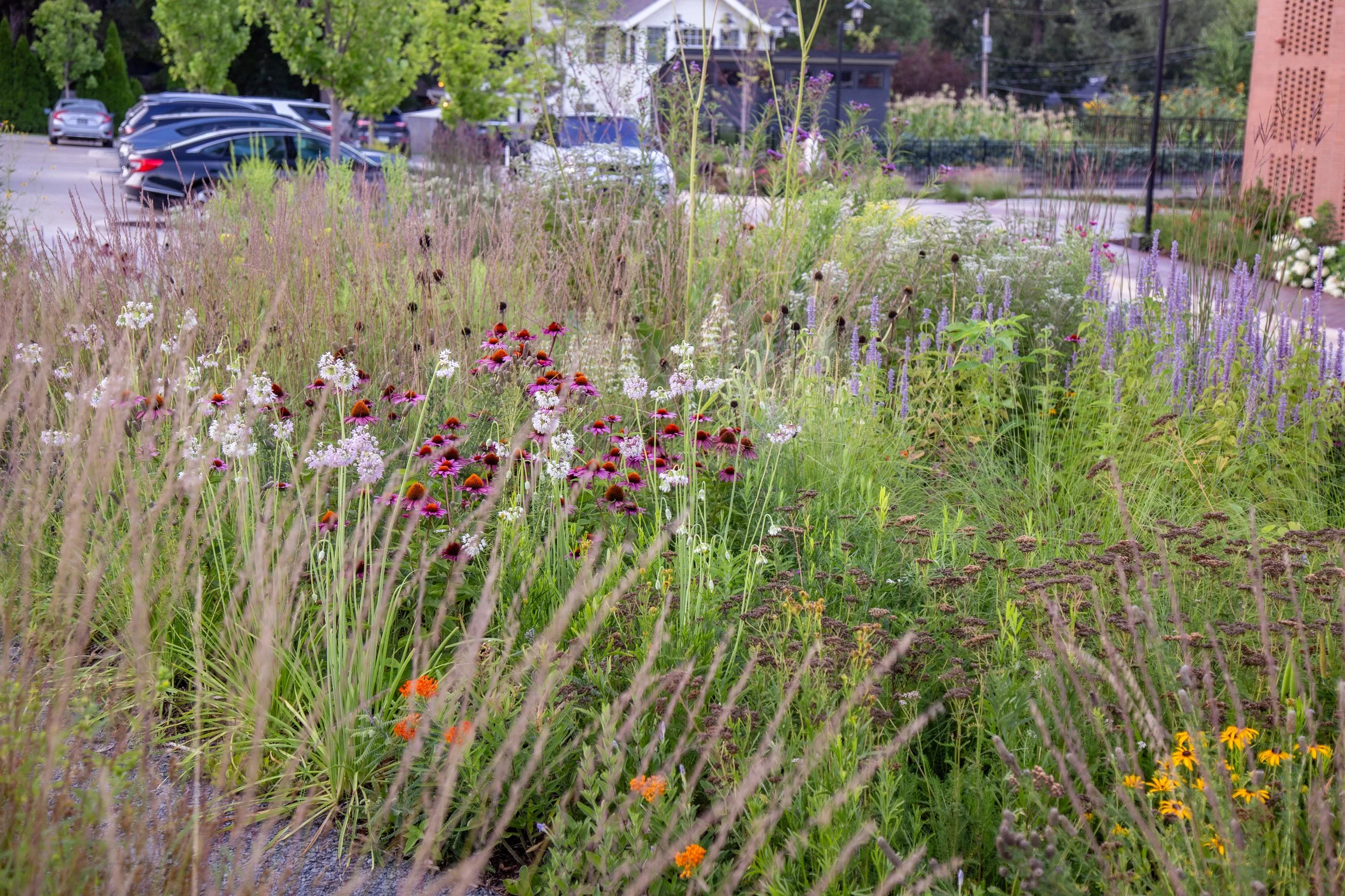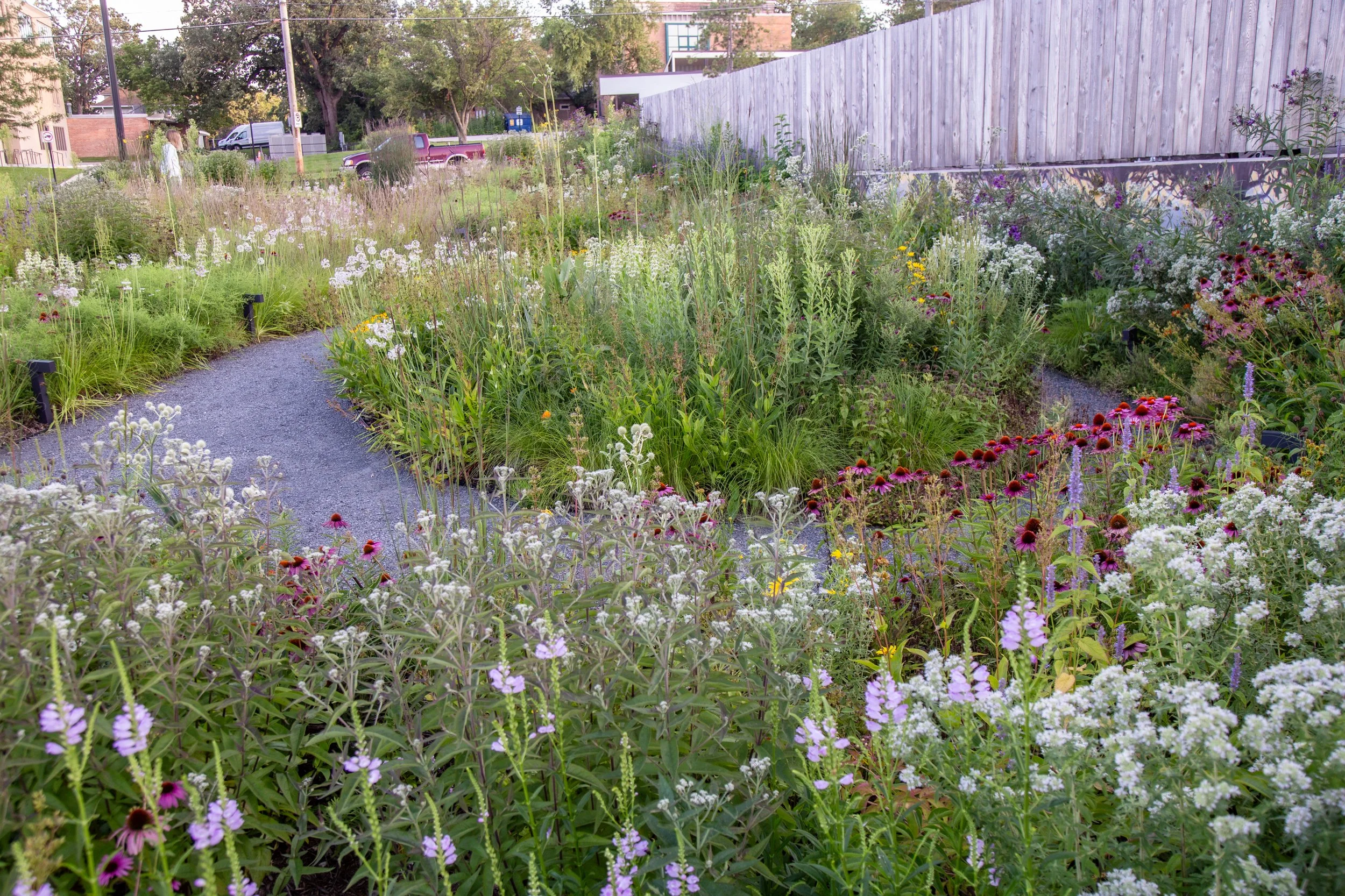
What if a stylized prairie was also the cornerstone of a culinary experience?
Oak Park Edible Prairie
Des Moines, Iowa — Installed 2024
5,900 square feet of prairie-inspired edible planting
In 2024, I was commissioned to design an edible prairie garden for Oak Park, an acclaimed culinary destination in the Ingersoll neighborhood of Des Moines. Opened in late 2023, Oak Park is a culinary jewel that seamlessly blends fine dining with heartfelt, Midwestern hospitality. Conceived by first-time restaurateur Kathy Fehrman, the establishment showcases seasonal, Americana-inspired dishes prepared with precision and creativity. The husband-and-wife duo of Executive Chef Ian Robertson and Pastry Chef Jess Robertson helms the culinary team. The restaurant boasts a wine cellar housing 9,000 bottles across 2,500 labels. Oak Park has quickly become a cherished addition to the Des Moines dining scene, celebrated for its exceptional cuisine and community-focused ethos. The restaurant building, designed by local architect Brad Hartman, was built in a Prairie-style inspired by Frank Lloyd Wright. The restaurant’s name is a nod to the Chicago neighborhood where Wright built his first Prairie-style home in 1901.
The design brief called for a dynamic, contemporary prairie planting that bridges ecology and gastronomy in the service of place-making. This was not simply a decorative project. The client asked for something “more magical than just a building”—a landscape experience that could heighten the restaurant’s identity and elevate the guest encounter from the very first step. The result is a 5,900-square-foot living installation that interprets the tallgrass prairie as a seasonal larder: an expressive, immersive, and edible public garden that reflects the restaurant’s ethos of creativity and sense of place.
Concept & Context
The project draws inspiration from the cultural and ecological histories of Iowa’s prairie landscapes. Rather than recreating a prairie in a strict ecological sense, the design serves as a horticultural translation that highlights plants with culinary, aromatic, or medicinal properties. Our approach was guided by the idea that the prairie was shaped, tended, and harvested by generations of people whose foodways were deeply intertwined with the land. The edible prairie at Oak Park incorporates both stewardship and gathering as part of its maintenance logic, subtly inverting the expectation that gardens are only to be viewed or that plants are left to their own wild devices. Here, care involves more than just weeding and watering; it also includes cutting and cooking.
The site conditions—a severely compacted clay formerly beneath a parking lot and construction zone—called for thoughtful soil amendment strategies, while the microtopography informed our path grading and bed delineation. The placement of structural trees and shrubs echoed a nearby mural depicting an oak savanna scene. At the same time, a lush, herbaceous ground plane provides ever-changing vistas from the restaurant's windows and outdoor patio.
Design Process
The garden’s plan—a winding path system designed to preserve as much area in the center as possible to minimize disturbance—was conceived to guide staff and guests through seasonal waves of texture, color, and scent. It translates the rhythms of moving through oak savannas and prairies with a minimal amount of grade change but a heightened sense of progression. As you make the big loop through the garden, you cross between several modules of the planting framed by different edible shrubs and small trees. The planting design followed our usual site-specific, quantitative approach involving 63 taxa designed as a series of species’ abundance curves across three layers (matrix, structure, and vignettes). The planting was laid out using a script developed from our base Excel file and a hand-drawn map produced during the layout, which served as both a communication tool and allowed us to document patterns in real-time. This framework enabled the team to work responsively in real-time while adhering to a set of visual and ecological goals.
Reflection
The edible prairie is already in active dialogue with the kitchen, with chefs experimenting with select harvests in the first growing season. It offers guests a story before a menu—an invitation to slow down and take in the beauty, generosity, and layered histories of the prairie as it makes its way to the plate. In a landscape increasingly dominated by sterile and oversimplified green spaces, this project suggests a different possibility: that gardens can be productive without being utilitarian and plant-driven without being chaotic. It’s a space that invites engagement, not just observation. As with any good garden, the Oak Park edible prairie is not finished. It will change as the seasons rotate and as people gather, harvest, and care for it. In this way, the garden becomes a living extension of the restaurant’s values, where nourishment and narrative meet.
























